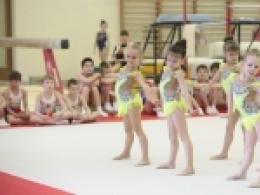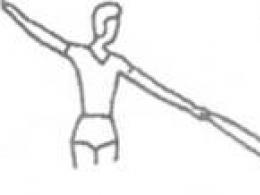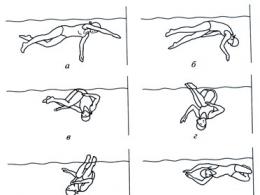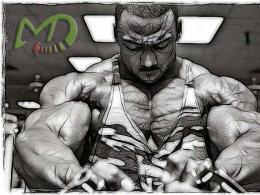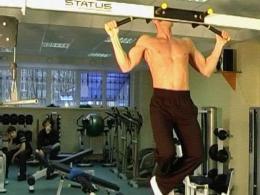Throwing a hoop with a foot in rhythmic gymnastics. Gymnastics. Hoop exercises. hoop games
Hoop throws can be in a straight line (high throws) and in an arc (arc throws). The hoop itself can be at the same time vertically, horizontally or obliquely and rotate before catching.
For accurate and high performance of any throw, it is necessary to rotate the hoop or swing the free, relaxed arm, straightened at the moment the hoop is released, exactly in the direction of the intended flight. When fishing, it is necessary to achieve continuous cushioning of the fall of the hoop using rotation or swing to move on to the implementation of subsequent elements.
The easiest to start with are throws with two hands. When performing these elements, students learn to follow the flight plane of the hoop, accurately direct the throw and absorb the force of the fall when catching. When these elements are quite firmly mastered, you can move on to learning throws with one hand in a straight line and in an arc. Throws in an arc are very different in amplitude of flight, depending on the magnitude of the applied force and on whether the swing to throw is given with a brush, bending the arm at the elbow or shoulder joints. The hoop itself can fly over the shoulder, under the shoulder, under the legs, around the body, etc.
Special learning requires throwing a hoop with rotation around the hand. In this case, it is necessary to ensure that the use of force for the throw occurs at the moment of rotation of the hoop upwards (the hand is at the bottom). The fall is also amortized by rotation or swing.
Throws with rotation of the hoop around the vertical or horizontal axes in flight are complex in terms of execution technique. Performing high throws by gymnasts shows the degree of possession of this subject.
1. The hoop forward, holding the upper edge from above: springing, small throw of the hoop and interception by the side edges. Springing, small throw of the hoop and interception by the bottom edge. The same, but catch the hoop with a grip from the inside.
2. Hoop forward-up: springing, throwing the hoop up. The same, but to catch on the run. The same, but after catching jump into the hoop, rotating it forward like a jump rope.
3. Hoop forward horizontally: throw (horizontally) up and catch. The same, but to catch while standing inside the hoop. The same, but a horizontal throw over the head, turn around and catch the hoop in front.
4. Hoop forward longitudinally: springing, throw the hoop up and catch. The same, but to catch, changing the position of the hands and tilting to the side. The same, but rotating the hoop 180° around the vertical axis.
5. The hoop in the right hand forward longitudinally: springing, swinging back and throwing forward and upward. The same, but catch with the other hand. The same, but throwing back in an arc, turning around and catching with the left hand. The same, but the throw is stronger, run after the hoop and catch with the same hand.
6. Hoop forward, hold with the right hand by the upper edge from the bottom: swing to the left and swing to the right-up, throw in an arc to the left, catch with the left hand. Repeat on the other side. The same, but throw only from the right-up (from below, pass the hoop to the right hand). The same, but a high throw in an arc and run over to catch it.
7. Hoop forward in the right hand: rotating around the hand, throw the hoop up, catch with both hands. The same, but catch with one hand, continuing the rotation. The same, but a high throw up, turn around and catch with the same or the other hand.
8. Hoop forward lengthwise: swing backward throw over the shoulder, catch with both hands. Same, but throw and catch with one hand. The same, at different steps.
9. Hoop in the right hand lengthwise upwards: lowering the hand, throw the hoop behind the hand in a small circle with the hand, catch with the same hand. The same, but a circle around the thumb. The same, with a sharp turn and catch with the other hand.
10. A hoop in the right hand lengthwise: an arc throw of the hoop behind the back (Fig. 65). The same, in front of the body (Fig. 66).
11. Hoop in the right hand horizontally: with a horizontal swing to the left, throw around the neck, catch with the right hand to the side. The same, but a throw around the torso.
12. Hoop forward horizontally: throw with two hands with upward rotation (around the horizontal axis), catch with both hands. The same, over the head and catch after turning around in front. Same, but throw with one hand. Same, but throw and catch with one hand.
1.Construction students in
one line, exchange
greetings.
2. Communication of lesson objectives students.
3 .Run at a moderate pace in alternation with rhythmic walking on toes, roll from heel to toes, in a squat in combination with various hand positions.
4 . Walking in set pace and rebuilding from the column one by one to the column in a circle to the left in motion.
5 .General developmental exercises:
Control1:. I.P.-o.s
1-hands on the belt
2-arms to shoulders
3-hands up
Exercise 2: I, P-hands to the sides
1,2,3,4 - rotational movements of the hands forward
1,2,3,4 - rotational movements of the hands back
in the elbow joints forward
1,2,3,4 - rotational movements
in elbow joints back
1,2,3,4 - rotational movements
straight arms forward
1,2,3,4 - rotational movements
straight arms back
Control1: I.P-O.S.
1-through side arms up
2.3-forward tilt
Exercise 2: I.P-O.S, arms to the sides, lean forward
1,2,3,4-rotational movements with the opposite hand touching the toe of the sneaker. Exercise - "Mill"
Control1: O.S-hands to the sides
1-Mach right leg forward, rise on the left leg on the toe
2-Mach in I.P., lev. foot down on the heel
3- Mach lion. foot forward, rise on the right foot on the toe
4-Mach in I.P., pr. leg down to the heel
Exercise 2: I.P-O.S, hands on the belt
1-lunge pr. foot forward
3-lunge right leg to the side
5-lunge lion. Foot forward
7-lunge lion. Foot to the side
6. Exercises for the formation of skills in learning the components of the technique exercise. with hoops:
Exercise 1 : I.P-O.S hoop in the right hand.
1,2,3,4 - swinging of the hoop in the front plane.
Exercise 2: I.P-O.S hoop in right hand
1,2,3,4 - rotation of the hoop in the front plane
Perform circles with the transfer of the hoop from one hand to the other without stopping the rotation.
Exercise 3: Rotation of the hoop on the floor and in front of you.
I.P-O.S hoop vertically to the right in the front plane.
1,2,3,4-perform circular rotations on the floor.
5,6,7,8 - perform circular rotations in front of you in the front plane.
Exercise 4: Hoop throws.
I.P.-O.S hoop in the right hand, the elbows are bent, the hand holds the hoop vertically.
1,2,3,4 - perform throws with the right hand
5,6,7,8 - perform throws with your left hand.
Exercise 5: Eights.
I.P-O.S hoop in the right hand.
1,2,3,4 - perform the figure eight with a hoop in a horizontal plane through the air.
7. Combination of exercises with a hoop to the music, in motion.
I.P-Students form a circle in the center of the hall.
1 couplet- 1-4-throws
5-8 rotation
Chorus:
verse 2: 1-4-rotation around itself in the air
5-8 rotation on the floor
Chorus: 1-4-throws in a vertical plane
5-6-rotation in the horizontal plane
verse 3: 1-4-rotate around yourself on the floor
5-8-eights.
Chorus: 1-4-throws in a vertical plane
5-6 rotations in the horizontal plane
8. Independent performance of individual free exercises with a hoop from previously learned combinations
9. Performing an arbitrary combined dance combination with a hoop to a given music.Individually or in pairs.
10. Hoops, hand over to the teacher.
The construction of students in one line, an organized exit from the sports hall in a column in one locker room
I.p. - standing hoop in the front plane with a grip on the lower edge with two
Left without hoop to the left, rotation on the right to the right
2-3- spins
5-8- also in the other direction.
I.p. - standing hoop on the right hand, gripping the upper edge from the bottom left
to the side
1-4 - swinging the hoop left and right
This exercise is given as a lead in order to feel the weight of the hoop.
I.P. - Same
1 - grabbing the hoop with a brush, lift it up and straighten your fingers
left rotation
2-3- spins
5-8- also with the other hand
Hand movements up and down are carried out along a circular path.
2) Rotation of the hoop in the lateral plane
I.p. - stand left hand to the side - back, right with a hoop to the left,
overhand grip
1-3- rotations of the hoop forward and backward vertically in the lateral plane
5-8 - also with the other hand.
3) Transferring the hoop from one hand to the other without stopping the rotation
Performing rotation of the hoop in the front plane with the right hand to the right - down, pass it to the left, while placing the left hand with the palm up next to the right hand on the lower edge of the rotating hoop, quickly remove the right hand.
4) Rotation of the hoop on the floor.
I.p. - standing hoop vertically to the right on the floor in the front plane,
grip with three fingers of the right hand from above, left to the side
1 - turn the brush outward, swing
2-3- sharply turn the brush inward, rotate the hoop inward
4 - grab the hoop with a brush from the outside, stop the rotation
Methodical instructions. Rotations should be uniform, without jerks and jerks. After mastering the rotations while standing still, you should connect spring leg movements to these movements. Having mastered all the above movements and passing the hoop from hand to hand without stopping the movement of the hoop, you can proceed to perform these exercises, but in combination with various dance steps.
throws
Performed with one and two hands in different planes.
Sequence of learning.
You should start training with throws with two hands.
1) Oblique hoop throw.
I.p. - oblique hoop stand, grip from the outside from the sides
1 - bend your arms, hoop obliquely to your chest
2 - step right forward, throw the hoop forward and up
3-4- put your left foot, catch the hoop with two hands from below.
I.P. - Same
1 - step right forward, bend the arms obliquely to the chest
2 - push right jump, left back, throw the hoop forward and up
3-4- two running steps, catch the hoop with a grip from below, accept the ip.
2) Horizontal hoop throw
I.p. - stand hoop forward horizontally, grip from the sides from below
1 - half squat, hoop down - forward
2 - straighten your legs, throw the hoop horizontally up
3 - catch the hoop with two hands from the sides from below
3) Vertical hoop throw.
I.p. - stand hoop forward vertically, grip from below
1 - swing the hoop down - forward
3 - catch the hoop with two hands from below
Similarly, throws are performed with a slight bend of the arms, half-squat and in motion.
4) Throwing the hoop with one hand and one hand after the spin
I.p. - stand hoop forward in the right bent arm, grip from below behind
top edge, left side.
1 - straighten your arms forward-up
2 - throw the hoop vertically up
3 - catch the hoop by the top edge from the bottom
5-8- also with the other hand
I.p. - Same
3 - throw the hoop vertically up
4 - catch the hoop by the upper edge from the bottom, i.p.
5-8- also with the other hand
I.p. - Same
1-2- rotation of the hoop to the left - up
3 - throw the hoop to the left in an arc vertically upwards
4 - catch the hoop with your left hand by the upper edge from the bottom, right to the side
5 - 6-rotation of the hoop to the right - up
7 - throw the hoop to the right in an arc vertically upwards
Catch the right hoop by the upper edge from the bottom, i.p.
5) Throws in the lateral plane.
I.p. - stand hoop to the right in a bent arm, grip from below by the upper
edge, left side
1-2- rotation of the hoop forward, springing with legs
3 - throw vertically up
4 - catch the hoop with your right hand at the bottom edge with a grip from below
5-7- repeat count 1-3
8 - catch the hoop with your right hand by the upper edge with a grip from below,
keep rolling forward
6) Throw the hoop under the shoulder.
I.p. - stand hoop at the top vertically in the right, grip outside
index finger forward on the hoop, left to the side - down
1 - hoop through the front, bend the elbow to the side, hand under the shoulder
2 - throw the hoop from behind under the shoulder forward-up
3 - catch the right hoop by the upper edge with a grip from below
4 - continue rotation.
Throws are also performed with the left.
Methodical instructions. The direction of the push with the hands during the throw is determined by the position of the hoop in flight. Therefore, before throwing, the hoop must be exactly in the position required in flight. Hand movements during throws should be strong and confident, and throws should be free and high. Catch the hoop with a grip from below or from above. When throwing a hoop with rotation around the hand, it is necessary to follow
so that the application of force for the throw occurs at the moment the hoop is rotated upwards (hand below). The fall of the hoop should be amortized by rotation or swing.
jumping
Perform with a push of two legs or from one leg to another.
Sequence of learning.
1) Jumping into a swinging hoop
I.p. - stand hoop horizontally forward, grip from above for the front
1 - swing the hoop back, jump into the hoop with a push of two
2 - swing the hoop forward, jump into the hoop with a push of two in sp.
3-4- repeat the score 1-2
I.p. - Same
1 - swing the hoop back, jump into the hoop with a push from left to right
2 - attach left
3 - swing the hoop forward, jump into the hoop with a push from right to left
Jumping rotating the hoop like a skipping rope
I.p. - stand hoop vertically, grip from above
1 - rotation of the hoop forward, push two jump into the hoop
2 - intermediate jump
3-4- repeat the score 1-2
I.p. - Same
1 - rotation of the hoop forward, push left to right jump into the hoop
2 - attach left
3-4- repeat the score 1-2.
Methodical instructions. Jumping is easy, free, on the toes. Land silently. Hoop movements without pauses, uniform. Jumping into a hoop requires good coordination of movements from those involved. When performing them, do not bend your arms, because. in this case, the hoop will rotate high above the floor, making it difficult to perform jumps.
Mahi.
Sequence of learning.
I.p. - stand hoop in the right side with the palm back, free grip, three fingers
1 - bend the right hand, swing the hoop down - to the left in the front plane
2 - swing down - to the right in sp.
3 - a large circle in the front plane to the left
4 - swing to the left, pass the hoop to the left hand
Bend the left, swing the hoop down - to the right in the front plane
6 - swing down - left
7 - a large circle in the front plane to the right
8 - swing to the right, pass the hoop to the right hand in ip.
The legs are slightly springy.
I.p. - Same
1 - a large circle in the front plane with a hoop down - to the left
3 - turning the brush back, bending the arm, the middle front circle behind
Guidelines. Small swings are performed with the movement of a straight arm in the elbow joint, and large swings are performed with a straight, relaxed arm from the shoulder.
Rolls.
Sequence of learning.
1) Rolls of the hoop in the front plane
I.p. - stand left leg to the side on the toe, hoop vertically on the floor on the right in the front plane, grip on the right outside, left to the side
1 - semi-squat on the right, put the left hand on top of the hoop, step left left right to the side on the toe, push the hoop with the right hand to the left, roll in front
3-4 - also in the other direction
Rolls are also performed, replacing steps with lunges to the left, right and catching up with the rolling hoop with an easy run.
2) Rolls of the hoop in the front plane at the back
I.p. - Same
1 - lunge to the left, push the hoop with your right hand to the left, roll from behind
2 - stop the rolling hoop with your left hand, take the sp.
3-4 - also in the other direction
Similarly, rolls are performed in steps and catching up with the hoop with an easy run.
Methodical instructions. Performing rolls to the side, the weight of the body should be transferred from one leg to the other. Rolls of the hoop on the floor complement additional actions: running, jumping, balancing, etc. During rolls, the hoop should not oscillate.
, candidate of biological sciences
EXERCISESWITHHOOP
Exercises With hoop - beautiful means For development coordination , you were fast motor reactions , accuracy movements . They increase force hands , oso benno fingers And brushes , effectively affect on formation correct posture .
hoops - plastic , wooden And duralumin - there are miscellaneous size . Most common hoop diameter 80 - 90 cm , A For schoolchildren junior classes acceptable hoop diameter 60 cm . Girls , at which enough Fine are obtained exercises With hoop on lessons , Can offer more complex - Vthrows And fishing , riffles hoop , jumping With him And T . P . in overtime nyh forms classes .
TerminologyAndtechniquelearning
All movements with the hoop are performed with one or two hands in various directions and planes, in combination with the movements of the torso and legs.
hoop and ways to change them. The grips are as follows: with two hands from the outside (Fig. 1) and from the inside (Fig. 2). The hoop is held with three fingers (thumb, index and middle) easily and freely.
|
|
|
|
|
|
Rice. 1 |
Rice. 2
The grip of the hoop with one hand (all fingers) is from above and below (Fig. 3). The thumb is on the outside.
When performing general developmental exercises, you should indicate the place of grip for the hoop (for the upper edge, for the lower, for the middle from the sides, slightly wider than the shoulders, etc.). All grips, except for the grip from above, must be indicated.
Rice. 3
The grip is changed either by a small throw of the hoop, or by fingering.
The position of the hoop in relation to the floor can be: horizontal (Fig. 4), vertical (Fig. 5) and inclined (Fig. 6), and in relation to the body it can be in the front (Fig. 7), side (Fig. 8) and intermediate (Fig. 9) planes.
|
|
|
|
Rice. 4
Rice. 5
Rice. 6
Rice. 7
Rice. 8 Fig. 9
NsshuchshygayaJob
Hoop exercises are divided into the following groups: turns, turnnia, throws And catching, hoop jumping And Checut it, swing movements, rolls of the hoop.
turns hoops are performed with two or one hands in various planes and directions in combination with movements of the torso and legs.
Sequence of learning1. Vertical turns of the hoop in whetherend plane(rice. 10). AND. p. - the hoop is vertically forward, the grip is outside (from the sides), the elbows are slightly bent. Omitting the right
the left hand in an arc downwards to the left, the left in an arc upwards to the right, turn the hoop to the right to the cross position of the hands (left on top) and return it to the i.p. Then the same is done on the other side;
Vertical turns of the hoop with the movement of the torso and legs. For example: i.p. - leg stand apart, hoop vertical but forward, grip outside. 1-2 - transferring weight to the right leg, left side to the toe, turn the hoop down to the right with the torso tilted to the left; 3-4 - reverse movement i.p. (Fig. 11);
The same with side steps in one direction and the other.
|
|
Rice. 10
Rice. eleven
Rice. 12
2. Turns of the hoop in the lateral plane forward and backward(rice. 12). AND. p. - hoop vertically on the left, left hand with a grip from below, right with a grip from above. Turn the hoop forward (elbows bent), then turn the hoop back, returning it to the SP;
The same, with tilts forward and backward;
The same, with side steps.
3. Hoop rotations in the horizontal plane performed right and left
before crossing arms from position "hoop horizontally at the top", grip from the outside from the sides, elbows slightly bent.
It is necessary to monitor the exact preservation of the hoop movement plane (vertical or horizontal).
Rotation of the hoop on the hands and on the body. It rotates in various directions in the vertical and horizontal planes with uniform movements of the arms, hands, body.
|
Rotation of the hoop by hand(rice. 14). You should vigorously swing the hoop, then continue to twist it with a relaxed hand, making short uniform movements. At first, these exercises are mastered standing still, and then in motion and making turns of 90 and 180 °. Rotation of the hoop with the body(rice. 16) start with a vigorous push in the direction of rotation and then support it with uniform, circular movements of the pelvis. These movements must be alternated with other general developmental exercises and game tasks. Rotations should be uniform, without jerks and jerks. It is important to teach children to rotate the hoop with their right and left hands separately, while standing still. Then master these movements with the springy movements of the legs. Children should be taught to transfer Th hoop from one hand to the other without stopping the rotation. The hoop must be held between the thumb and forefinger. |
Elements with a hoop in rhythmic gymnastics are rightfully considered one of the most graceful. The spectacle of this type is achieved mainly by performing exercises with various sports accessories: hoop, ball, rope, ribbon and maces.
There is an opinion among people that the simplest projectile is a hoop, but this is an erroneous judgment. The hoop is an unpredictable and versatile apparatus that allows the trainer to expand the base of elements and create interesting exercises for any age.
The choice of sports equipment
For games and entertainment, you can purchase a hoop of any weight and size, but for a professional there are certain standards.
There is an opinion among people that the simplest projectile is a hoop, but this is an erroneous judgment.
The size of the hoop is determined by its diameter. At the same time, one should focus not on the age of young athletes, but on their height. The ideal size for beginner gymnasts is a hoop whose diameter is equal to the length from the floor to the lateral thigh bone.
Later, at the age of 16, when the child begins to participate in international competitions in rhythmic gymnastics, an object of a standard diameter should be purchased. The standard hoop is a projectile approved by the World Gymnastics Federation. The diameter of a standard hoop is 85-90 cm, weight 300 gr.
Remember that a non-professional hoop, designed for games and entertainment, and not for sports, does not keep its shape and quickly breaks from stress, therefore it is not suitable for a rhythmic gymnast.
Elements with a hoop in rhythmic gymnastics: skill and technique
Start date
The training of elements with a hoop in rhythmic gymnastics begins with a consideration of the position of the object. The hoop in space can be in a vertical, horizontal and lateral plane. After familiarization with the position, the correct grip of the hoop is taught. The projectile can be held with an overhand grip or an underhand grip. It does not matter in which plane the hoop is at this moment. The grip from above is most often used when performing simple elements, the grip from below is used for complex elements.
After learning the grips, young gymnasts begin to learn to accompany the grips with springy leg movements to reduce tension in the body. At first, the coach learns all the elements slowly, so that in the future the position of the arms and legs during each movement will become automatic.
One of the important aspects of learning how to work with a hoop is the education of performing movements in rhythmic gymnastics together and to the rhythm of the music, while the work of the body is harmoniously combined with the movement of the object.
Technical flaws
Elements with a hoop in rhythmic gymnastics imply technical accuracy, but no one can perfectly perform the element the first time. To improve the technique of the elements, you should know in advance what technical shortcomings you will encounter during training.
Rotation
Rotation is the execution of periodic small circles around one of the body parts of the athlete. The main position is the rotation of the hoop on the hand in any plane of space and in any direction. At the beginning of training, it should be performed statically, after mastering it can be mastered in dynamics. To complicate the element, you can perform rotations at a different pace.
eights
The figure eight is a continuous periodic execution of circles in opposite planes. To complicate the element, you should add the number of rotations to the first or second part of the figure eight, as well as carry out movements in various rhythms, amplitudes or planes.
Circles and swings
They are preparatory and connecting very many elements. Produced in vertical, horizontal and lateral planes of space. They are divided into 3 types:
- Large - performed with a straightened arm (the entire shoulder joint);
- Medium - produced by a hand bent at the elbow joint;
- Small - performed exclusively with a brush;







 the hand is free, the left hand is downwards to the side (Fig. 13), the hand is in front. Perform several swings of the hoop, then, grabbing it with a brush, lift it up and, straightening your fingers, start rotation, making hand movements up and down along a circular path. Stop the rotation of the hoop by grabbing it with your fingers.
the hand is free, the left hand is downwards to the side (Fig. 13), the hand is in front. Perform several swings of the hoop, then, grabbing it with a brush, lift it up and, straightening your fingers, start rotation, making hand movements up and down along a circular path. Stop the rotation of the hoop by grabbing it with your fingers.